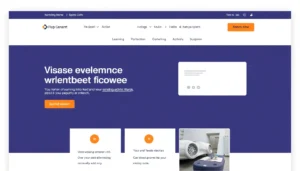Introduction to CS Teste: Understanding Its Role in Gaming and Testing
In the rapidly evolving world of online gaming and network testing, the term cs teste has emerged as a vital concept for gamers, developers, and network administrators alike. Whether you’re aiming to evaluate server stability, optimize gameplay performance, or ensure reliable connectivity, understanding what CS Teste entails is crucial. This article delves into the fundamentals of CS Teste, its practical applications, setup strategies, and advanced tips to maximize your testing outcomes.
What is CS Teste and Why It Matters
At its core, CS Teste refers to dedicated server environments used for testing game performance, network stability, and software reliability within Counter-Strike (CS) and other esports titles. These test servers allow for controlled experiments, troubleshooting, and performance benchmarking without disrupting live gameplay. With the increasing importance of seamless gaming experiences, CS Teste has become a strategic tool for server administrators and game developers aiming to identify bottlenecks, reduce latency, and enhance user satisfaction.
Beyond gaming, CS Teste also encompasses testing applications, APIs, and other digital services that require high-quality performance verification before deployment in production environments. For example, mobile app developers utilize similar testing environments, like the CS teste APK for Android, to ensure new features operate correctly without impacting existing users.
Common Use Cases for CS Teste Servers
CS Teste servers serve multiple functions across various industries:
- Gameplay Optimization: Gamers and server hosts utilize CS Teste to fine-tune server settings for optimal performance, such as reducing lag and preventing crashes during peak hours.
- Development & QA Testing: Developers employ these environments to simulate real-world conditions, test new updates or patches, and validate game features before official release.
- Network Performance Monitoring: Network administrators track latency, packet loss, and throughput to ensure smooth connectivity for players across different regions.
- Educational & Training Purposes: Training sessions for new admins or developers leverage CS Teste servers to practice configurations and troubleshooting.
For instance, services like CS 2 Ping Test and CSInspect are popular tools integrated within CS Teste environments, providing real-time insights into network latency and item inspection, respectively, enhancing the overall gaming experience.
Differences Between Public and Private CS Teste Environments
Understanding the distinctions between public and private CS Teste environments is essential for choosing appropriate testing frameworks:
- Public Test Servers: Accessible to a broad user base, these servers are primarily used for large-scale testing, community feedback, and stress testing. They are often hosted by game publishers or community groups and may have varying levels of stability.
- Private Test Servers: Restricted to specific users or development teams, these environments offer greater control over configurations, data, and security. They are ideal for rigorous testing, iterative development, and performance benchmarking.
For example, services like Test CS 48HS or Teste CS 48HS are private or semi-private platforms that allow controlled testing windows, ensuring that developers can thoroughly evaluate updates before public deployment.
Setting Up Your CS Teste Server for Optimal Performance
Essential Hardware and Network Requirements
Successful testing begins with robust infrastructure. To establish an effective CS Teste server, consider the following hardware essentials:
- High-Performance CPU: Multi-core processors (e.g., Intel Xeon or AMD Ryzen Threadripper) are necessary to handle multiple simultaneous connections and complex simulations.
- Ample RAM: A minimum of 16GB RAM, preferably 32GB or more, ensures smooth operation under load.
- Reliable Storage: SSD drives significantly reduce latency and loading times, improving testing accuracy.
- Stable Network Connectivity: Fiber-optic connections with high bandwidth (1 Gbps or higher) minimize latency and packet loss during testing.
Configuring Server Settings for Stability and Speed
Proper server configuration is vital. Start by adjusting network parameters to prioritize gaming traffic, enabling port forwarding for dedicated test ports, and disabling unnecessary background services that could interfere with performance. Implement quality of service (QoS) rules to ensure consistent bandwidth allocation. Regular updates and security patches also safeguard the environment against vulnerabilities.
Best Practices for Managing Test Environments and Data
Effective environment management includes routines like segmenting testing data, backing up configurations frequently, and isolating test data from production systems. Utilizing version control for scripts and settings allows seamless rollbacks. Additionally, documenting configuration changes assists in troubleshooting and iterative improvements.
Implementing Effective Testing Procedures with CS Teste
Designing Test Scenarios for Accuracy and Reliability
Develop clear, goal-oriented testing scenarios tailored to specific performance metrics. For example, simulate high player loads to examine server stability or introduce bandwidth constraints to assess latency behavior. Incorporate real-world variables such as background traffic and hardware faults to gain comprehensive insights.
Monitoring and Analyzing Server Performance Metrics
Employ monitoring tools like Grafana, Nagios, or built-in server metrics to track key indicators: CPU usage, memory utilization, network latency, and packet loss. Analyze trends over time to identify bottlenecks and optimize configuration accordingly. Regularly review logs and performance reports to catch anomalies early.
Collecting Feedback and Iterating for Improvement
Gather input from testers and end-users systematically. Utilize surveys, direct observations, and automated feedback mechanisms to identify pain points. Apply changes iteratively, conducting subsequent tests to measure impact and refine the environment continually.
Maximizing User Engagement and Reliability
Communicating with Test Participants Clearly
Transparency is vital. Provide detailed instructions, testing timelines, and contact information. Use dedicated forums or chat channels for real-time support. Clear communication fosters trust and encourages consistent participation, which is essential for robust testing data.
Ensuring Consistent Uptime and Minimizing Downtime
Implement redundant server architectures, automated failover systems, and regular maintenance schedules. Employ monitoring tools that alert administrators to issues before user impact occurs. Also, keeping software and hardware updated reduces unexpected outages.
Leveraging Data to Refine User Experience
Analyze user engagement metrics, latency reports, and feedback to tailor server settings—such as adjusting tick rates or optimizing data packets—for improved performance. Continual data-driven adjustments help maintain a competitive edge and elevate the overall gaming experience.
Advanced Tips for Long-Term Success with CS Teste
Automating Testing and Performance Checks
Automation tools like Jenkins or custom scripts can run routine performance tests, stress tests, and configuration validations. Automating these processes ensures consistency, reduces manual errors, and accelerates feedback cycles.
Integrating with Development Pipelines
Embed testing environments into CI/CD pipelines to streamline deployment processes. Automated tests within pipelines help detect regressions early, maintain stability, and ensure new updates meet quality standards before reaching players.
Scaling and Expanding Your Test Environment Safely
As demand grows, scale cautiously by expanding hardware capacity, adding load balancing, and deploying geographically distributed servers. Conduct pilot tests prior to full-scale expansion and monitor performance meticulously to prevent service degradation.



